Neon Dreams: Cyberpunk Car Interior Design
Neon Dreams: Futuristic Car Interfaces Illuminate the Roads of Cyberpunk 2077's Visionary World
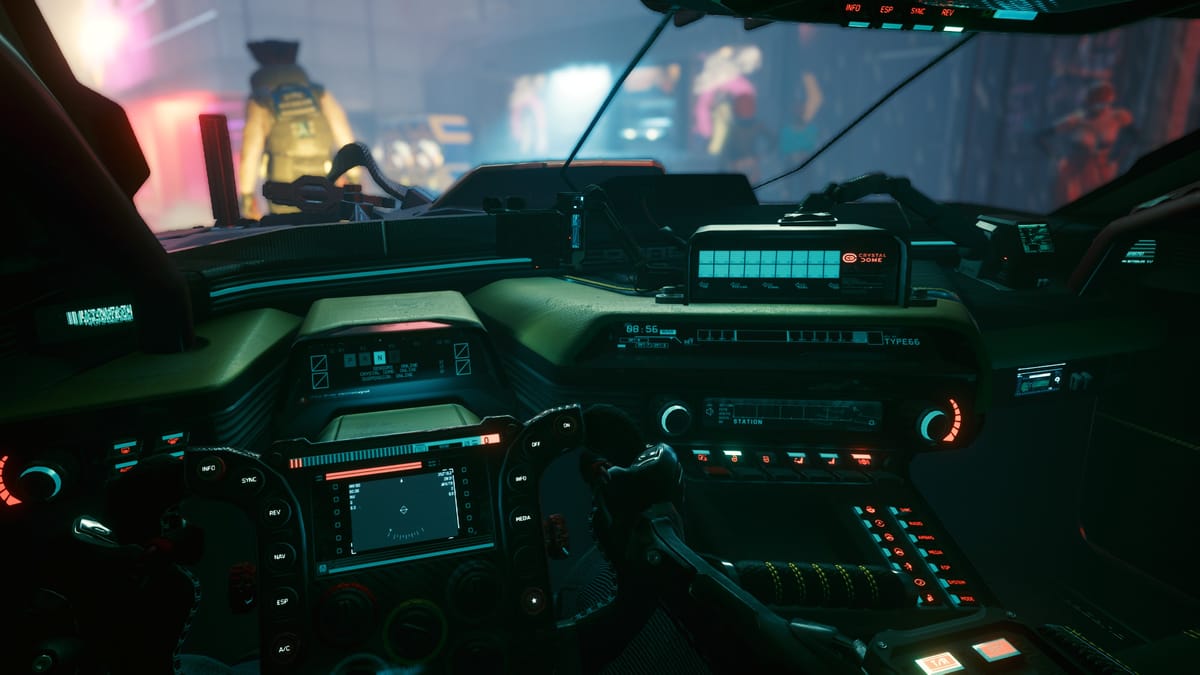
In the summer of 1994, my friend's Dad had a Ford.
I can't recall the exact model, but it didn't stand out from the outside. It was just a typical Ford from the 1990s in the UK, blending in with other cars of that era. A box with wheels, essentially. There was no magic to be had with this vehicle, no eventual fondness for its exterior design after all these years.
Inside is where things got a little more interesting. "Wow, that looks so cool!" I exclaimed to everyone in the car, pointing towards the car dash. Inside, just beyond the balding head of the driver in front of me, a digital dashboard existed, displaying everything from oil temperature to speed.
It looked impressive to my 10-year-old self, especially the soft glow that illuminated outwardly towards our faces as the sun dipped below the horizon.
Ultimately though, it struck me as an odd design choice, as instead of a traditional analogue odometer, here we had a neon blue LCD panel with what could only be described as "fat pixels".

If you're familiar with LCD alarm clocks from the 80s and 90s, then you're on the right track.
I continued, "It's like something from the future!"
But was this the future? Were all cars to feature ever more elaborate dashboards featuring ever larger LCD panels? Well, not really. If anything, this design language was seemingly a bit of a fad. That ride in an otherwise boring Ford would be the first and last time I'd see a dashboard like this.
In the 1990s, in the UK at least, this dashboard presentation was considered a bit unusual and was mostly forgotten until it had more practical purposes beyond its futuristic appearance. That didn't stop car manufacturers from trying their best though, especially across the water, stateside.
While dash design continued to evolve, the LED digital dashes of the past left a mark on impressionable designers, none more so than those who worked on Cyberpunk 2077. In 2077, the dashboards within cars are adorned with red, green and blue digital displays - seemingly at odds with a world that's still very much analogue in many regards.
In the context of 2077, vehicles hold a significant and crucial role.
“Vehicles are an important part of that world, along with architecture, characters, and weapons, and we wanted to offer players an immersive experience, so they could enjoy taking part in street chases or simply cruising through the streets of Night City." Senior Vechicle Designer, Paweł Breshke Czyżewski
Let's delve into the evolution of digital dashboards from decades past, why they never really caught on, and explore why they remain a source of inspiration and fascination in the world of cyberpunk today.
Dials of the Future

In the '80s and '90s, a few pioneering car manufacturers ventured into the realm of digital instrument panels, aiming to infuse their vehicles with a futuristic flair. Think Back To The Future and Blade Runner, and you're not too far off how designers approached instrumentation panels.
However, these early attempts were met with mixed reception, with drivers outright questioning if this shift to a more digital dash benefited the driving experience at all.
Certain brands persevered. Luxury and premium automobiles like the Cadillac Seville and Oldsmobile Toronado ventured into digital dashboard experimentation, proclaiming it to be the standard going forward, but despite their efforts, drivers never fully embraced the concept.
One significant reason for their limited popularity was the complexity of the technology at the time. Digital displays were relatively expensive to manufacture and maintain, which made them primarily accessible only to the premium car market.
They were also prone to failure, with intricate electronic components that were susceptible to malfunctions. This unreliability led to frustration among drivers who were used to the simplicity and durability of analogue systems.
The transition from analogue to digital instrumentation was also met with scepticism by some drivers who were more accustomed to the traditional, mechanical dials. Many motorists found it challenging to trust these early digital dashes, and this scepticism hindered their widespread adoption.
It would take years of technological advancement and improved reliability for digital instrument panels to gain the trust and acceptance they enjoy in modern vehicles.
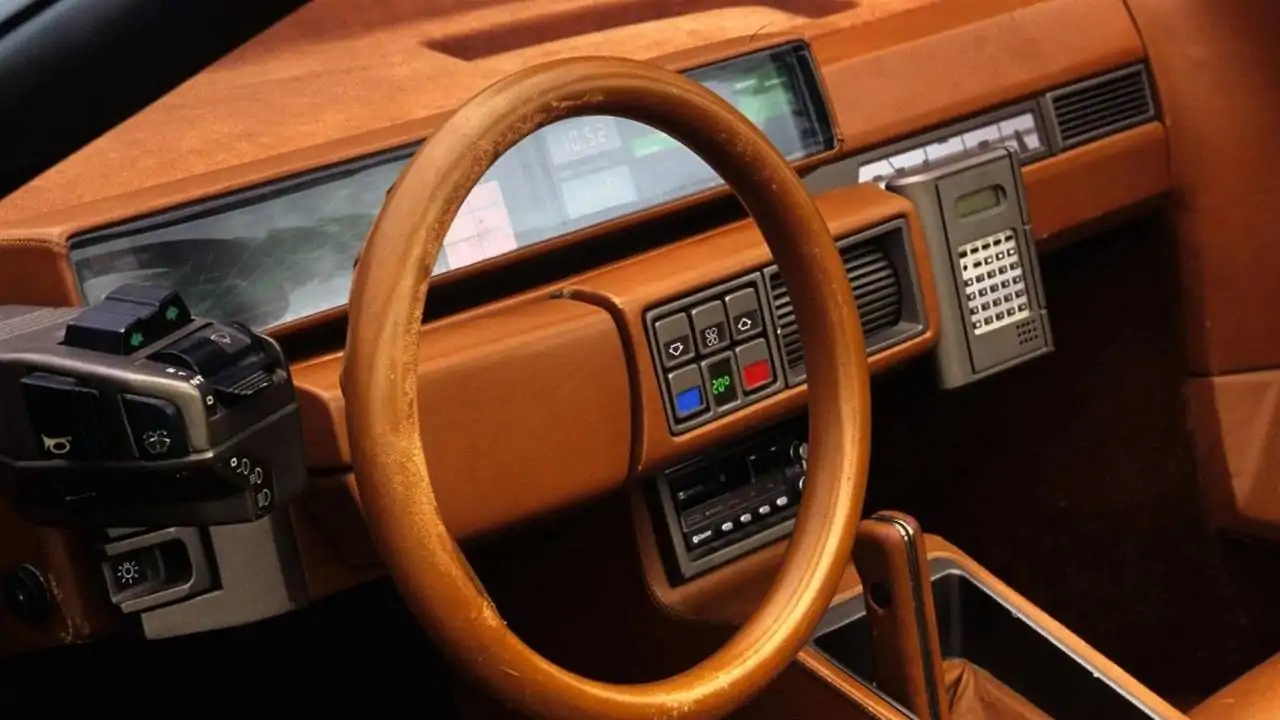
The current surge in the production of electric and hybrid cars has brought new meaning to digital dials. They're also vastly less expensive to manufacture now, meaning that digital displays have become a practical choice that provides information on battery status, energy consumption and even obstacles or dangers in the road ahead.
Cyberpunk's Nostalgic Ode to Digital Instrumentation
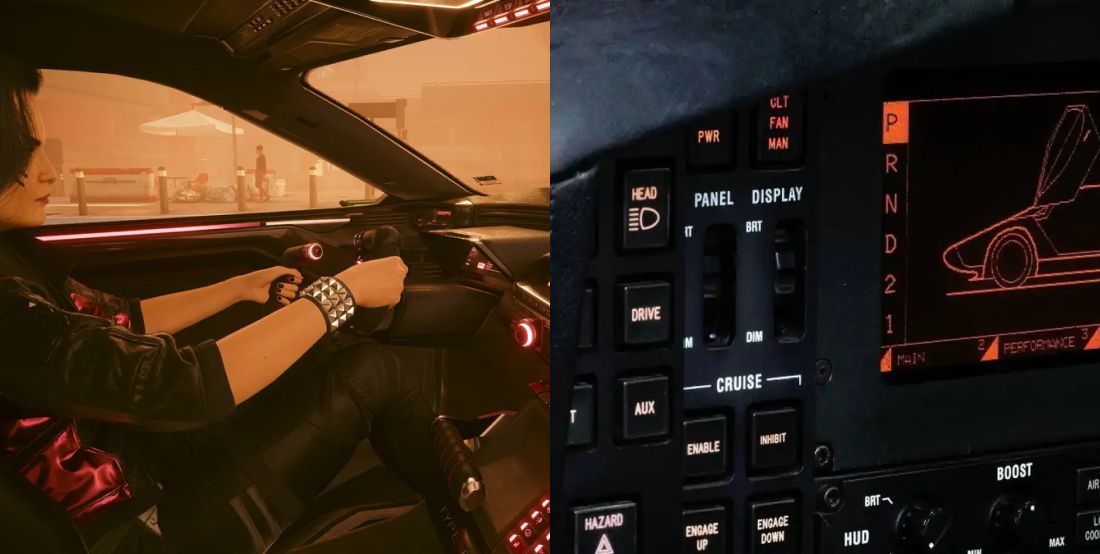
Even with the proliferation of digitalisation in cars today, nothing looks cooler than the monotone panels of the 80s and 90s, hence the reason they serve to inspire designers who depict tech in a cyberpunk world.
“We wanted our vehicles to exhibit a mix of retro and futuristic elements. For that reason, we used weird proportions, asymmetry, sensors, lidars, and other accessories attached to the bodies,” Senior Vehicle Designer, Paweł Breshke Czyżewski
You might think that Cyberpunk 2077's depiction of car interiors is pure science-fiction, but I can assure you, that's not the case. Car designers of the 80s in particular got wild, even going so far as to change the shape of the humble steering wheel.
Yoke Style Steering Wheels
If you thought the yoke that now features in Tesla Model Y's and X's was controversial, have a look at what Oldsmobile had in their Incas concept.
The Incas featured an expansive instrument panel adorned with numerous screens. Gazing at the array of crimson digits might evoke a sense of nostalgia, reminiscent of revisiting the DeLorean time machine in the iconic Back to the Future trilogy.
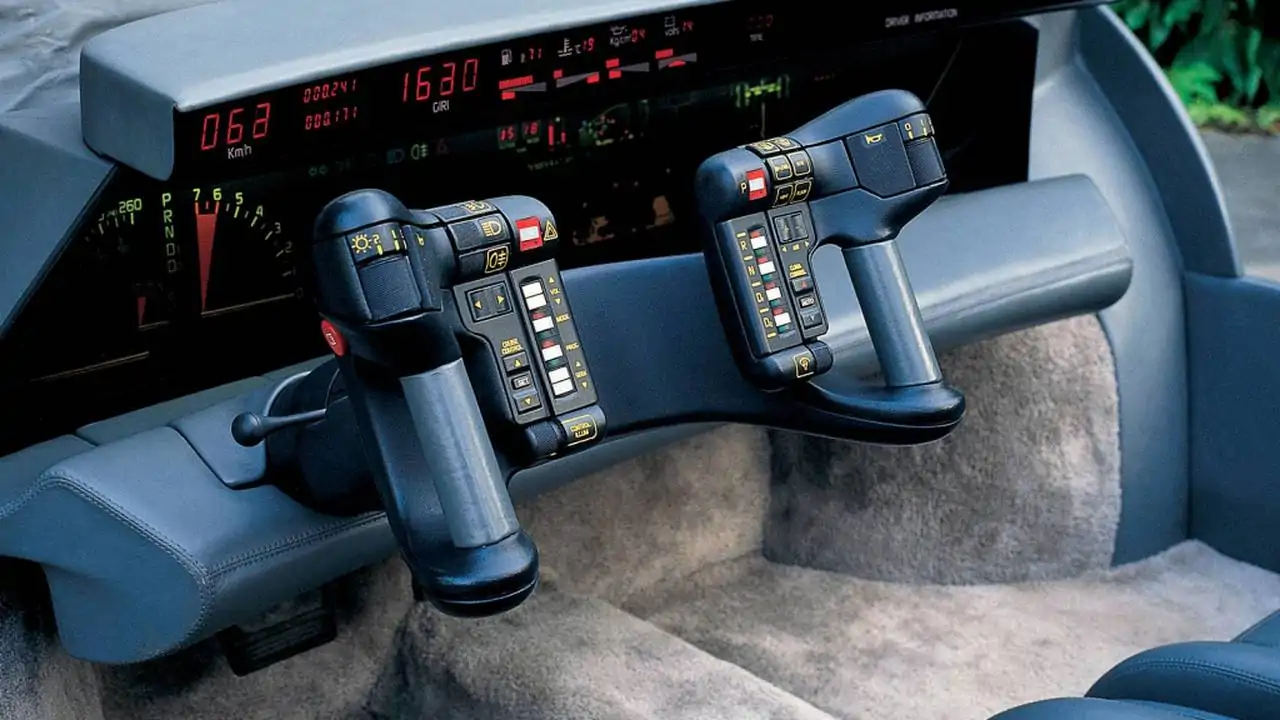
Too cluttered, with too many buttons, the steering wheel too unconventional, the Incas never transcended prototype status. Thankfully for us, a similar design lives on in the world of Cyberpunk 2077.
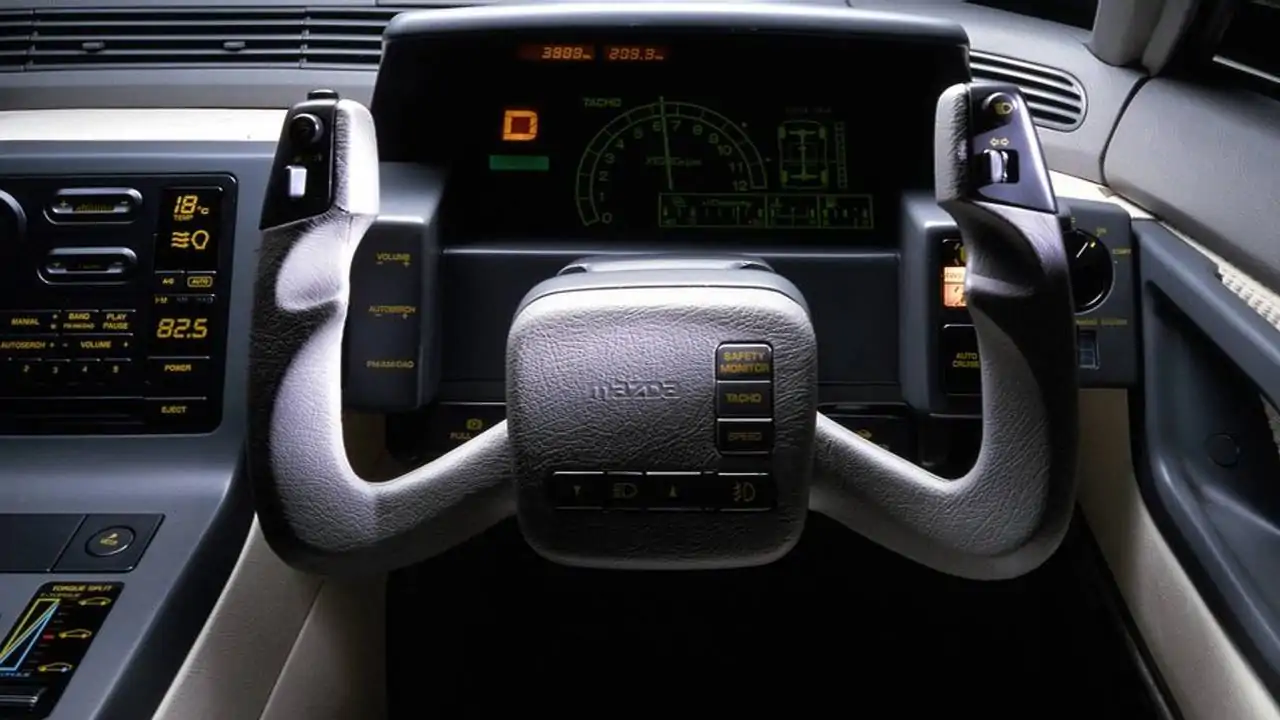
Mazda were seemingly fans of the yoke-style steering wheel too. The MX-03 showcased an entirely digital dashboard situated behind a steering wheel reminiscent of a jet fighter's. Impressively, it also incorporated a head-up display and onboard telephone.
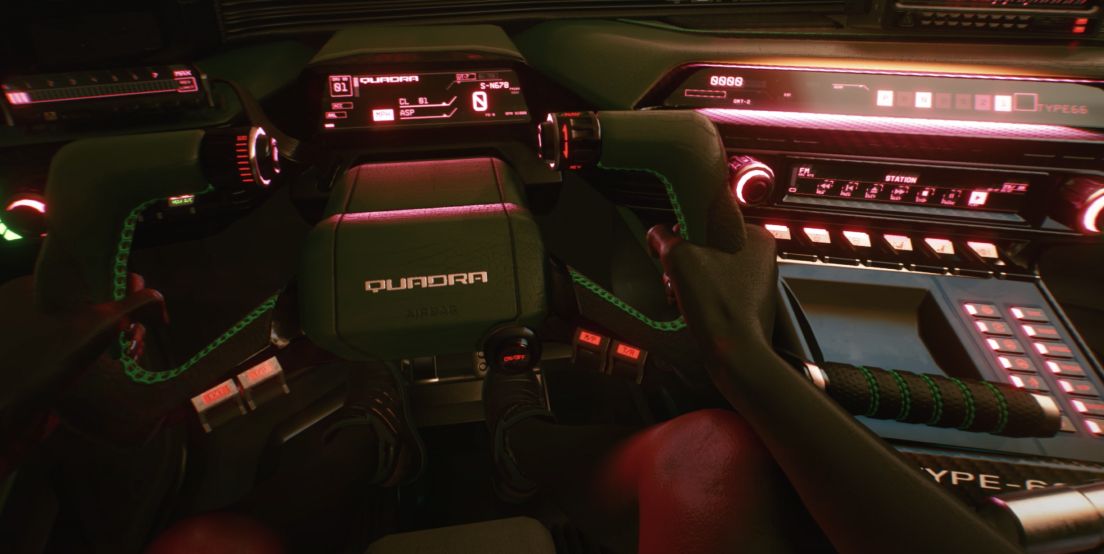
The yoke steering wheel, shaped like an aeroplane's control yoke, is a topic of controversy in the automotive world. While some appreciate its futuristic aesthetics and potential for enhanced visibility, others find it impractical and uncomfortable for daily driving.
The debate centres on its usability and departure from the traditional circular wheel design.
Fixed Instrumentation in the Center of the Steering Wheel
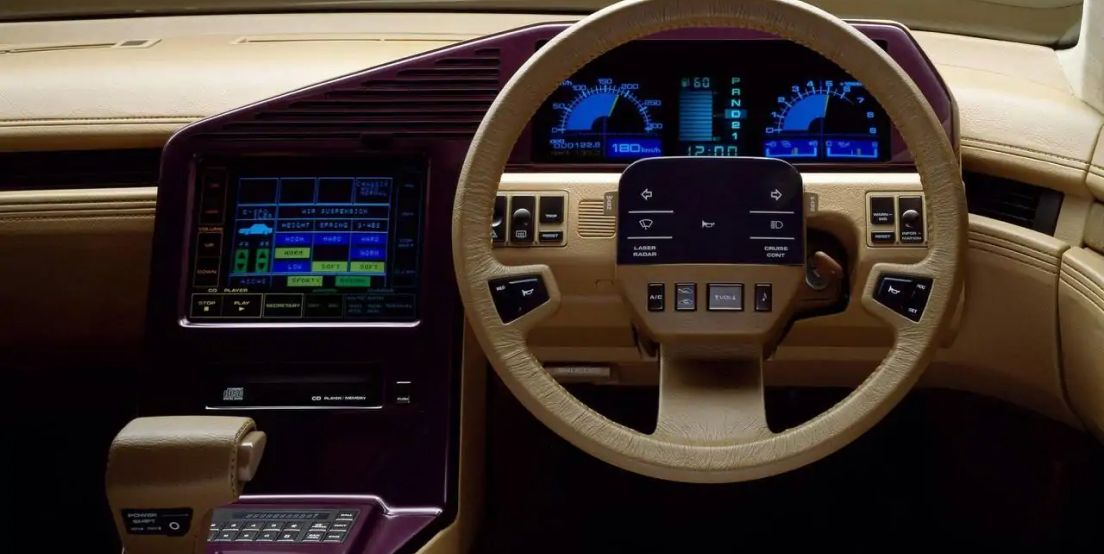
Nissan's CUE-X takes a different approach from other manufacturers by steering away from the controversial yoke steering wheel, opting for a more conventional, circular design.
It truly embraces the cyberpunk spirit in its instrumentation panel, featuring a futuristic display, completely reminiscent of cyberpunk aesthetics, with colourful accents and intricate digital elements.
However, Nissan would go one step further, implementing a feedback system (sidelights, headlights, indicators etc.) into the steering wheel itself.

You can see a similar design in 2077, where some of the controls (mostly for lighting and some form of navigation) are embedded into the centre of the steering wheel. Fun fact: this is in no way practical, and buttons should always remain stationary within the vehicle for ease of use while keeping your eyes on the road.
Even in the fictional world of 2077, buttons have a place
In 2077 technology has clearly reached remarkable heights, but the importance of buttons in cars remains undeniably relevant. These tactile interfaces serve a critical purpose by providing drivers with a tangible and distraction-free means of control.
While voice commands, gestures, and touchscreens have become more sophisticated, the tactile feedback of physical buttons still holds a distinct advantage. The haptic response of buttons allows drivers to operate essential functions without diverting their attention from the road ahead.

Even in self-driving cars, passengers may desire manual control in certain situations or simply prefer the reassurance of physical buttons. Whether adjusting climate settings, changing audio tracks, or engaging safety features, the tactile experience of pressing a button provides a sense of reliability and control that complements the advanced technology of the era.
Buttons in cars of 2077 bridge the gap between cutting-edge automation and the timeless need for a tactile connection between humans and their machines.
Cyberpunk 2077 is a testament to the hypothetical fusion of art, technology, and imagination. Regardless of how close we came to many of these designs in real life, it's lovely that the team at CD Projekt Red spent so much time ensuring that every car interior in the game was crafted with incredible attention to detail.
Its dashboards, adorned with neon hues and futuristic displays, not only serve as functional elements but also transport us to a world where the boundaries of cyberpunk design are pushed to the limit.





Comments ()